Terrors of the Deep: 5 Sea Creatures that will Keep you up at Night
Staring at the ceiling, you check your phone and its 1:30 am. What’s keeping you up at night? Children might say spiders or the Boogeyman. Adults might say mortgages or credit card bills. Though some of these might be more terrifying than others (mortgages, eek!) most people can agree that it’s the things we can’t see that are often the scariest. So let’s dive deep into the depths and conjure images of creatures that truly are terrors of the deep.
Deep-sea Lizardfish
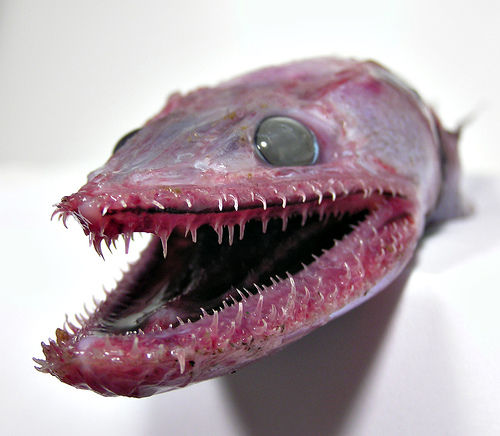
Ah yes, let’s start with our friend the Deep-sea Lizardfish (Bathysaurux ferox). Far from prying eyes, they’re found at depths exceeding 3,000 feet, which is in the “midnight” or aphotic zone. No sunlight is able to penetrate such deep waters—the animals who live there must adapt to living in darkness.
Those very distinctive, sharp teeth help lizardfish to snap onto their prey. They even have teeth on their tongues! Because food is often scarce and infrequent in the deep sea, these ambush predators will wait for whatever prey will swim on by.
Unfortunately, food isn’t the only thing that can be in short supply: Deep-sea Lizardfish have a tough time finding love. However, they have evolved an interesting way to overcome this. You see, deep-sea lizardfish are synchronous, or simultaneous hermaphrodites. This means they can produce both male and females gametes at the same time. Honestly, with a face like that they’re doing themselves a favor on this one.
Phronima sendentaria

Meet Phronima sendentaria, a parasite that likes to make its home inside other animals. Fun fact: P. sendentaria are thought to be the inspiration behind the xenomorphs in the Alien movie franchise. Those chest-bursting xenomorphs sure are cute.
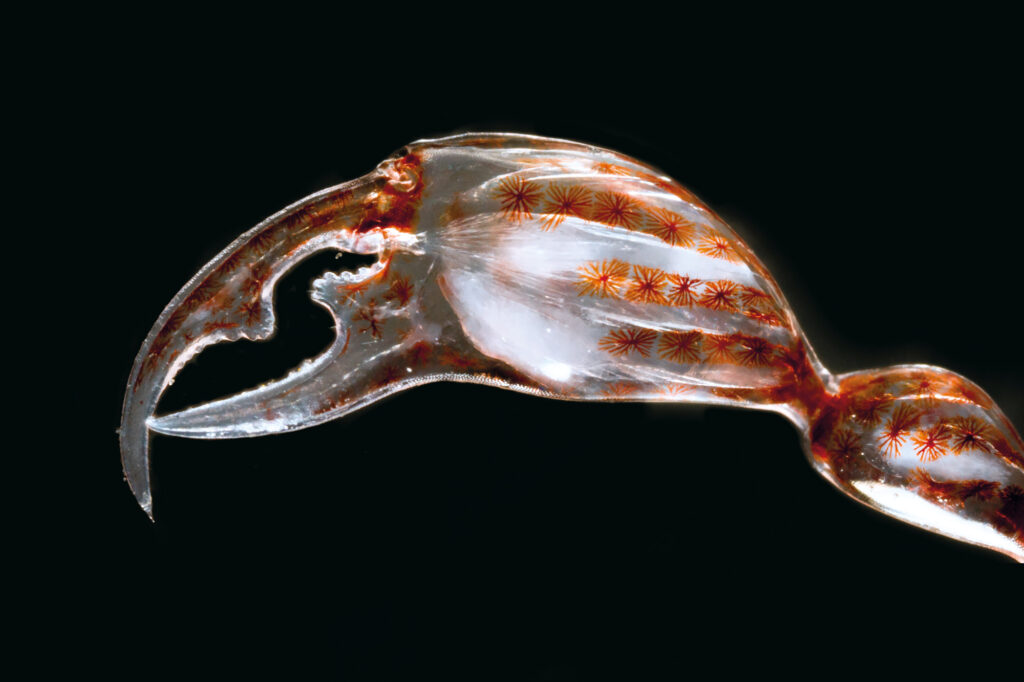
P. sendentaria are found throughout the world’s oceans and swim in open water. In order to make their homes, P. sedentaria will attack salps, which are barrel-shaped, gelatinous zooplankton, and make them their hosts. With their large claws they carve out the insides of their victims, climb inside and continue to roam the open oceans in their new vessel.
This new home also serves as an incubator for P. sendentaria’s offspring. Not much research has been done on these terrifying home invaders because they are difficult to study in the open ocean.
Blind Cusk Eel
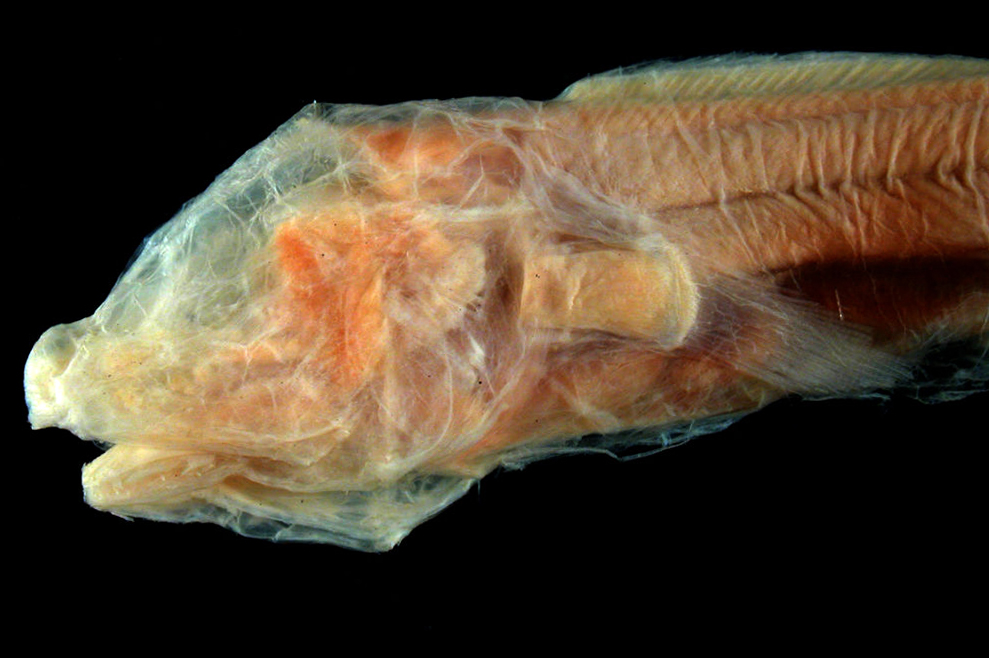
Just one look at the Blind Cusk Eel and you know that this creature belongs in the deep sea. Pale, scaleless skin, gelatinous flesh, small, unpigmented eyes – the dark depths are indeed this eel’s constant companion.
Living in tropical and subtropical waters at depths below 2,300 feet, the Blind Cusk Eel belongs to the same order as the other Cusk Eels. However, they exist within a different family, Aphyonidae.
The weird thing about the Blind Cusk Eel is that they are neotenous, which means they have retained certain larval characteristics into adulthood. Traits like their skeleton, muscles, eyes, and lateral line are all underdeveloped or reduced. Makes you wonder how they can even survive at all.
Like most deep-sea dwellers, finding a mate can sometimes be difficult. But Mother Nature always finds a way. For male Blind Cusk Eels, they produce little sacks of sperm called spermatophores which they then deliver to the female. The females often will have multiple spermatophores with them, thus solving the problem of creating a new generation of these blind, gelatinous creatures of the sea.
Zombie Worms

No, these worms do not crave brains. Actually, they really like bones. Not better, I know. Measuring 2-7 cm long, Osedax worms were first discovered living off the bones of a rotting gray whale on the deep sea floor, nearly 10,000 feet, in 2002.
Osedax don’t actually eat bones because they don’t have a mouth or a stomach. Instead, they secrete an acid from their skin that dissolves the bone which frees up the fat and protein trapped in the marrow. Bacteria in the worms’ bodies then digest the fat and protein. It’s still unclear how this process works, but maybe it’s best not to think about it too much.
Luckily for us, Osedax are also not picky eaters. They love all kinds of bones. And if that’s not weird enough, the only ones doing the bone liquefying are the females. The males, which are microscopic, live inside the females!
Stargazer
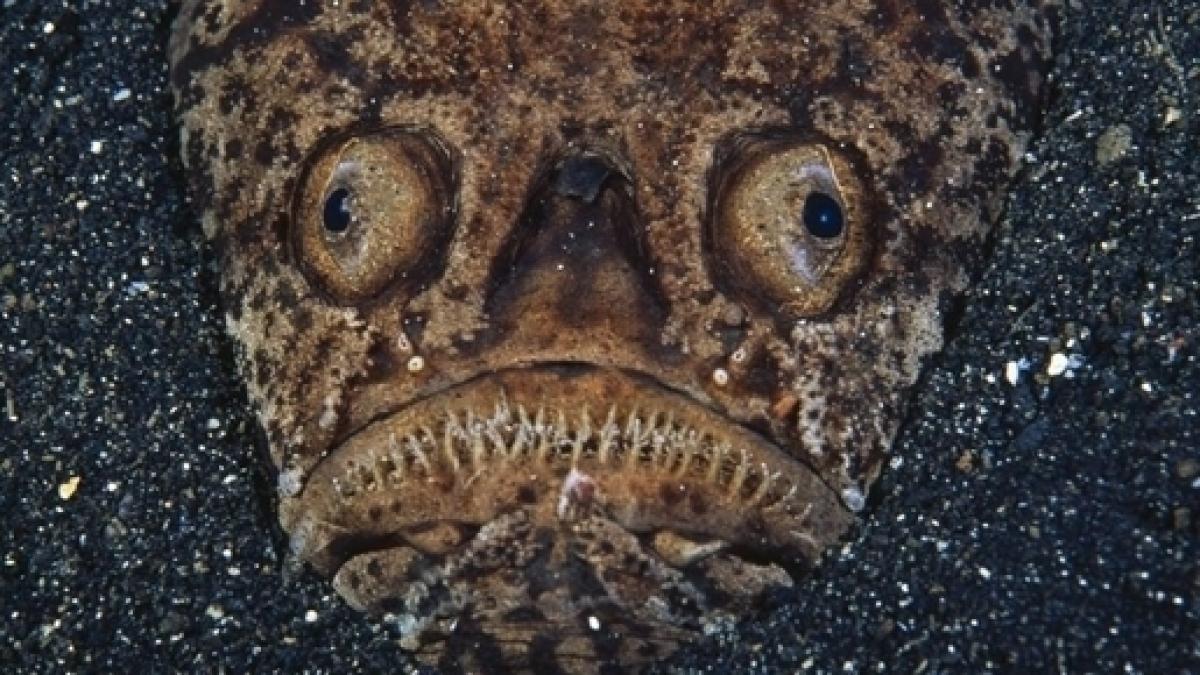
To round out our fab five, let’s introduce a fish with a face not even a mother can love. The Stargazer, named for the upward-facing eyes and gaping mouth have an instantly recognizable face marred with the expression of constant hunger.
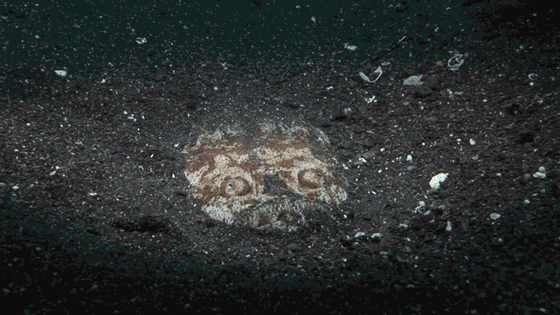
Stargazers like to bury themselves in the sand, forgoing style for substance and live most of their lives blending in with the ocean floor. They can bury themselves in seconds, leaving only their eyes and mouth visible.
Some Stargazers from the genera Astrosopus and Uranoscopus are bioectrogenic, meaning they are capable of producing electricity like electric eels. And as good as they are on offense; Stargazers have a pretty good defense too. Two large spines on their backs allow the fish to inject venom into their attackers.
These are true ambush predators, and the Stargazer’s strategy is all about patience. Some species have a wriggly, worm-shaped appendage inside their mouth that they use as a lure. Once caught, a Stargazer can swallow their prey whole, only leaving bits and pieces as evidence.
It’s no wonder some people might call these fish “the meanest thing in creation“.
And so down into the murky depths we go…let’s see what other terrors of the deep we can find and explore. Curious about other sea creatures? Check out these tiny drifters.
